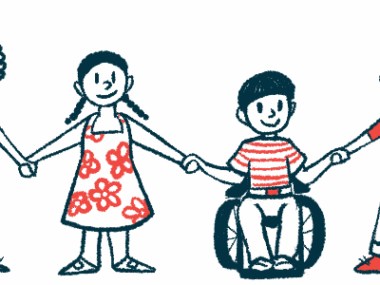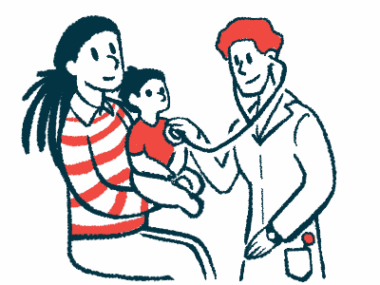Study finds how life quality changes over 1.5 years for SMA children
Some had improvements, largely due to better physical, social functioning
Written by |

Children with spinal muscular atrophy (SMA) experience impaired health-related quality of life even when using disease-modifying therapies, according to a recent Swedish study.
Still, over time on treatment, some patients experienced life quality gains, particularly those with SMA type 2. These improvements were largely related to improved physical and social functioning.
“Our data helps quantify the patient burden of disease and adds to the rapidly expanding body of evidence of the effectiveness of recently approved disease-modifying therapies for SMA,” researchers wrote.
The study, “Health-related quality of life of children with spinal muscular atrophy in Sweden: A prospective cohort study in the era of disease-modifying therapy,” was published in the European Journal of Paediatric Neurology.
3 disease-modifying SMA therapies have been approved in recent years
In the last few years, three disease-modifying SMA therapies have been approved, including Spinraza (nusinersen), Evrysdi (risdiplam), and Zolgensma (onasemnogene abeparvovec).
These therapies have significantly altered the SMA treatment landscape, enabling patients with all SMA types to live longer and healthier lives. For patients, this could mean a better overall quality of life.
Yet, few studies have examined SMA life quality in the era of disease-modifying treatments, according to the researchers.
As such, the team examined the change over time in health-related life quality (HRQoL) for children with SMA who were treated with Spinraza or Evrysdi in Sweden.
A total of 27 patients under age 18 with SMA types 1, 2, or 3 were identified via a national patient register and included in the analysis. The mean age of the children was 9.17 and 59% of them were girls.
Overall, 26% had SMA type 1, 33% had type 2, and 41% had type 3. All patients were receiving Spinraza, with one person who switched to Evrysdi before the end of the study. At the start of the study, patients had been treated with an average of 10 doses.
Caregivers for these patients were asked to complete a questionnaire related to HRQoL at the study’s start (baseline), as well as six months, one year, and 1.5 years later.
Our data helps quantify the patient burden of disease and adds to the rapidly expanding body of evidence of the effectiveness of recently approved disease-modifying therapies for SMA.
Physical function was most affected domain
Called the Pediatric Quality of Life Inventory 4.0 Generic Core Scales, the caregiver assessment includes 23 questions covering four domains: physical, emotional, social, and school functioning.
At baseline, the mean total score was estimated between 52.68 and 59.19 out of 100, where higher scores indicated better life quality. These scores were notably lower than the scores observed in general population reference data, the researchers noted.
Physical function was the most affected domain. Children with SMA types 1 and 2 had notably lower physical functioning scores than those with SMA type 3, and somewhat lower social functioning scores, whereas emotional and school functioning were more similar across SMA types.
By 1.5 years, the mean total score was estimated between 49.64 and 60.99, with physical function scoring the lowest. Overall, 56% of patients had higher overall scores in life quality at the end of follow-up compared with baseline, and 44% had the same or lower score.
In particular, children with SMA type 2 saw the most dramatic improvements in life quality relative to the other two patient groups, which was driven largely by improvements in physical function.
Particularly, these children saw a mean annual total score increase of 4.11 points, whereas those with type 3 saw a 1.12-point increase, and patients with type 1 experienced a 2.03-point decrease.
Across SMA types, the questions with the most substantial improvements included “participating in sports activity or exercise” — where 44% of patients improved — and “other kids not wanting to be his friend,” where 44% also saw improvements.
Items with the largest score reductions included “worrying about what will happen to him” and “missing school because not feeling well,” both of which deteriorated for 37% of participants over 1.5 years.
Children’s health-related life quality rated relatively high by caregivers
When asked to directly rate their child’s health-related life quality on a scale of 1-7, with a higher score indicating better life quality, the mean score at baseline was 5.65, which was similar after 1.5 years.
The scientists suggested that this relatively high score could be related to something known as the “disability paradox,” in which people learn to cope with their situation and adjust their expectations.
In general, responses from mothers and fathers in the study were similar, although fathers tended to indicate a greater clinical burden of SMA, and mothers perceived greater issues with schooling.
Overall, “SMA has a detrimental impact on the HRQoL of affected children that extends above and beyond impairment related to loss of physical functioning,” the researchers wrote.
“It would not be surprising to observe diminishing HRQoL over time in this disease population, rendering the improvements noted for some patient groups in the present study particularly encouraging,” they added.
The scientists noted that their study was conducted during the COVID-19 pandemic, during which daily life was disrupted for most people, which could have influenced the study’s findings.








